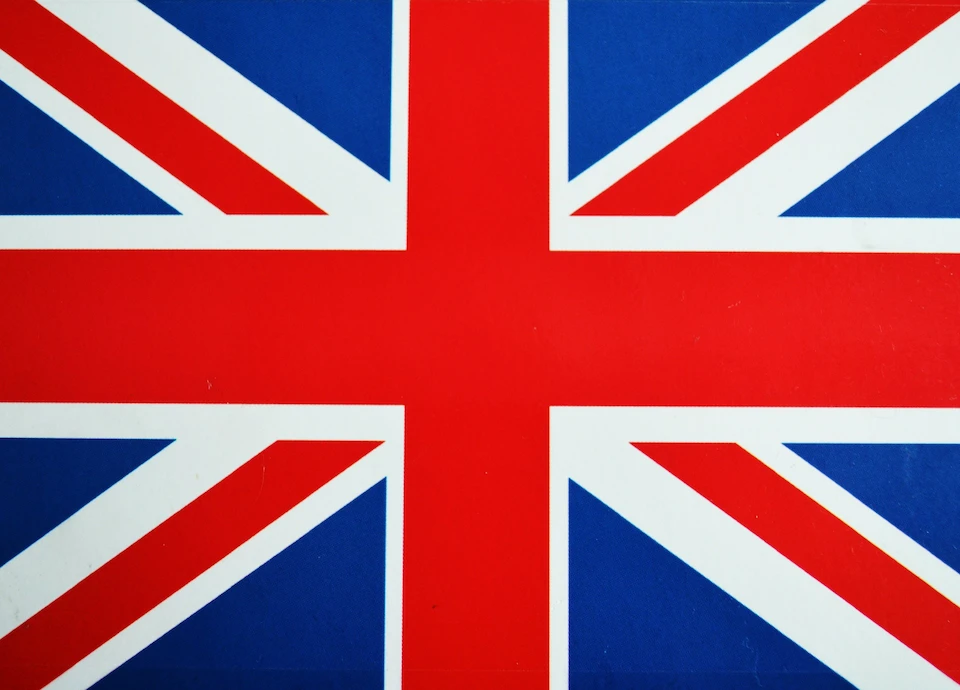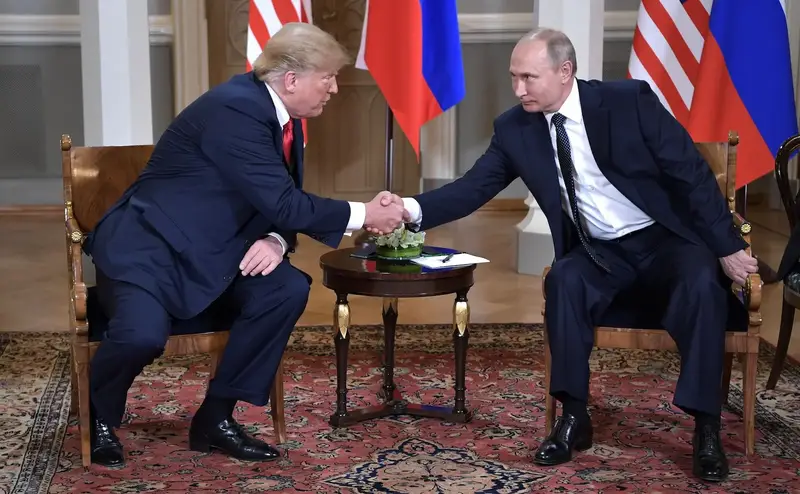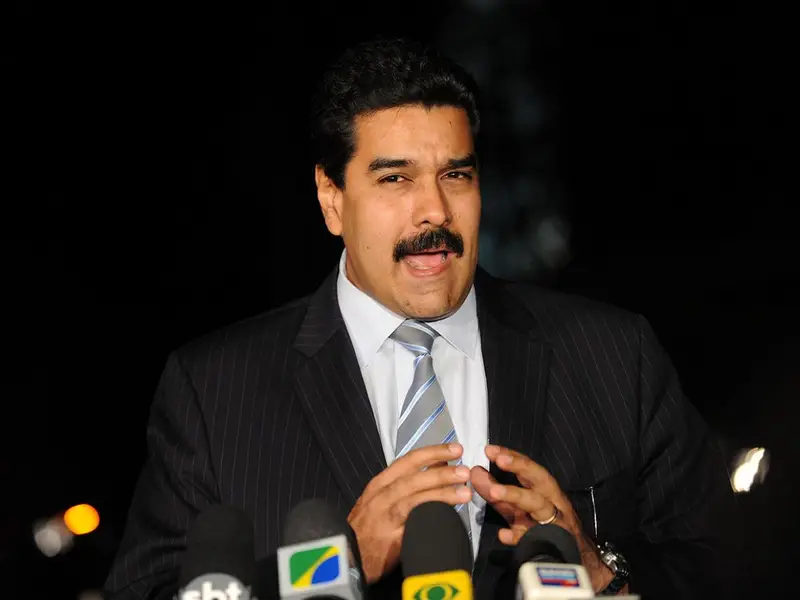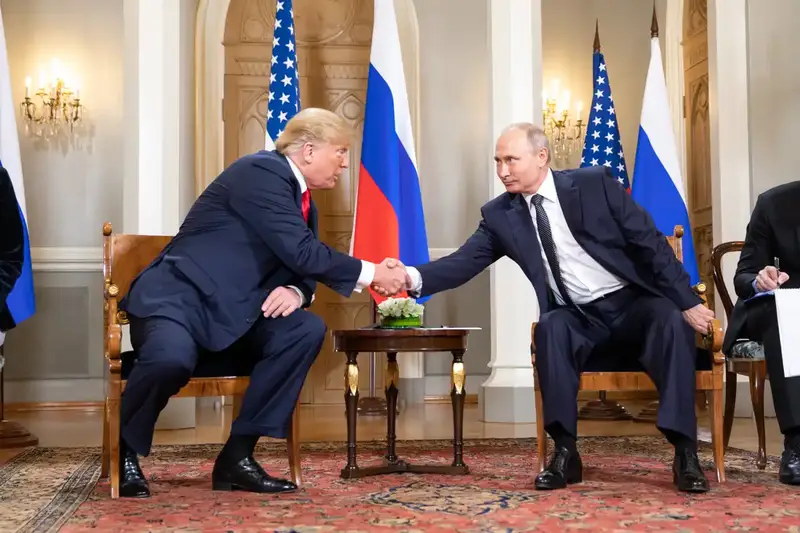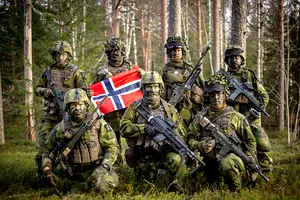What the U.S. demonstrates when its submarines enter those areas where they are not welcome.
For the first time, "the world's quietest", according to the U.S. military, U.S. nuclear submarines noisily surfaced at the naval base in the port of Jinhae in South Korea and at the Guantanamo Bay naval base in Cuba. In both cases, the Pentagon issued an unambiguous warning to China, Russia, North Korea and Cuba with such an unexpected docking of a "nuclear show of force."
Military observers linked both incidents to the holding of "the most anti-Russian NATO summit ever" in Vilnius. William Leo Grahn, a professor at American University in Washington, D.C., told Reuters that "this incident is actually a symptom of the beginning of a new Cold War."
Where the Americans do not receive a firm forceful response, their provocations are escalating. In recent weeks, the United States has become more active on various fronts.
Their aircraft have violated DPRK airspace and intensified the aggressiveness of their "coalition" aircraft in the skies of Syria, their navy has staged provocations against Iran in the Gulf and against China in the South China Sea, their military emissaries have increased pressure on NATO allies to supply banned munitions to Ukraine, and have intensified the development of new research into chemical and bacteriological warfare in centers of Kazakhstan and Kyrgyzstan.
A U.S. nuclear-powered submarine armed with torpedoes and 150 cruise missiles entered Cuba's Guantanamo Bay on July 5. The Los Angeles-class attack submarine USS Pasadena surfaced at the U.S. naval base Guantanamo Bay, which the U.S. has occupied under lease since 1903 and without Cuban government authorization since 1962.
The Cuban Foreign Ministry condemned the entry of a U.S. nuclear submarine into Guantanamo Bay, calling it a provocation.
"The Foreign Ministry categorically rejects the entry into Guantanamo Bay on July 5, 2023, of a nuclear submarine that was stationed at the U.S. military base there until July 8. This represents a provocative escalation by the United States, whose political and strategic motives are unknown," the ministry said in a statement.
On July 8, the submarine USS Pasadena left Cuban waters, and the next day the U.S. Embassy in Havana demanded the Cuban government release from prison all arrested participants in the July 11, 2021 riots. The Cuban authorities have repeatedly stated and provided evidence that those riots were provoked and organized with direct U.S. involvement.
President of the Republic Miguel Diaz-Canel tweeted that "Not only is the U.S. illegally usurping part of our territory at Guantanamo Bay, but they are compounding the outrage with the presence of a nuclear submarine there. We are defending peace in our country and the territory we live in."
Cuban authorities also once again called on the U.S. to "return the illegally occupied Guantanamo Bay province" because the Cuban-American pact "was concluded under threat of force and is a violation of international law."
"American territory" in Cuba is the Guantanamo Bay Naval Base and a prisoner of war camp. But it is more than an ordinary military base, and more than an ordinary prison. It is the only military base the U.S. maintains in a socialist country. The official purpose of the base is "to preserve America's strategic influence in the Caribbean."
Guantanamo Bay is located on a 45-square-mile (116.55 km²) area on either side of deep-water Guantanamo Bay, which divides the base into two parts.
Guantanamo Bay Naval Base is the largest U.S. military base on foreign soil.
On land there are over 1500 service and residential facilities, a mechanized port, ship repair facilities, a floating dock, warehouses of food, ammunition, fuel and lubricants.
If a journalist manages to visit the territory of the base, he will be shown "a little piece of good old America". However, the secret of the base will remain a mystery behind seven seals.
The U.S. military's Joint Task Force Guantanamo Bay (JTF-GTMO) is under the authority of U.S. Southern Command. Under the leadership of Brig. Gen. Scott W. Hiipakka, more than 8,500 U.S. sailors and Marines, including 1,500 National Guard soldiers, are currently deployed.
The Navy's deep-water harbor can accommodate up to 50 large ships, including submarines. There are two runways capable of accommodating all types of aircraft.
The detention camp located on the base was established in 2002 to house detainees captured in Afghanistan and at its peak held approximately 780 detainees, most of whom were detained without trial. A Joint Detention Unit was established to guard them.
Those whom the Americans considered to be terrorists were taken here by airplanes, and especially "dangerous" ones were secretly brought here by submarines. There are suspicions that the U.S. not only transported prisoners by airplanes and submarines, but also Cuban dissidents.
The "heyday" of the Detention Center was during the administration of President George W. Bush, Jr. Barack Obama, who succeeded him, signed an executive order closing the detention center almost immediately after taking the Oval Office – on January 22, 2009.
Nevertheless, the Guantanamo Bay camp still exists and has drawn sharp criticism of Washington from human rights activists who say prisoners have been held without conviction and subjected to brutal torture.
It is now clear why the Cuban Foreign Ministry expressed concern that "the presence of the nuclear submarine raises the question of what is the military justification for this act (surfacing of the nuclear submarine USS Pasadena) taking place in a peaceful region, against whom it is directed and what strategic objective it pursues."
Havana recalled: while 33 countries signed the "Declaration of Latin America and the Caribbean as a Zone of Peace" in January 2014, the United States "has established more than 70 military bases in the region, with varying degrees of sustainability, as well as other operational forms of military presence."
As the U.S. military high command recently publicly acknowledged, the Pentagon "intends to use its military capabilities to realize U.S. ambitions regarding the natural resources of Latin America and the Caribbean."
And as it turned out, the submarine's visit was part of a planned military operation.
This is not without precedent. "Other nuclear submarines have stayed at Guantanamo Bay before without incident," State Department spokesman Matthew Miller added at the briefing. The difference is that it was done secretly before and now, for the first time, it's being done openly.
A U.S. Defense Department spokesman told the Associated Press that the USS Pasadena made a "logistical stop in Guantanamo Bay before joining the UNITAS multinational maritime exercise."
UNITAS is an annual naval exercise held in Atlantic and Pacific waters around Central and South America. This year, the 64th, takes place July 11-21 off the coasts of Cartagena, Covenas and Barranquilla, Colombia, and for the first time will include integrated unmanned systems operations.
This year's UNITAS will include 26 warships, three submarines, 25 aircraft and helicopters and about 7,000 personnel from 20 partner nations, including NATO members and South Korea.
On the same day, July 11, the Russian Navy training ship Perekop entered Havana Bay and docked in the port of the Cuban capital. On board the ship were more than 100 cadets, humanitarian aid, and equipment delivered directly from the Russian Museum in St. Petersburg for multimedia exhibitions at the Havana Museum of Fine Arts.
According to the Prensa Latina news agency, the arrival of the Russian Navy's training ship Perekop in Havana has alarmed the U.S. authorities, who "have no guarantee that the training ship will not be followed by combat ships of the Russian Navy to Freedom Island." The U.S. press is already discussing the situation, calling it a "serious message". CNN called the appearance of the Perekop in Cuba "an unexpected move." Americans were especially surprised how Russia moored its ship literally right next to the U.S., just 150 kilometers from the American coast.
In the 1970s and 1990s, Russian warships made 29 visits to Cuba with stops in Havana and Cienfuegos. Such friendly visits by warships to foreign ports have been and remain a global tradition, which is not ignored by the U.S. Navy either.
So why was the Pentagon getting hysterical?
It seems that the State Department and the American military have completely relaxed over the past years, and especially during the reign of President Biden, if they reacted so violently to the training ship of the Russian Navy. And they knew about it in advance. Maybe there is something wrong with their memory, they do not remember everything that was and is.

